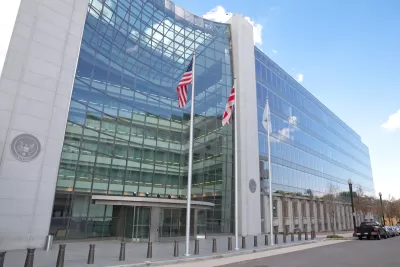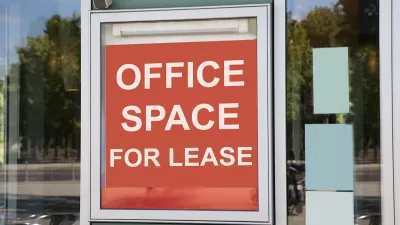Many federal agencies are sitting on underutilized buildings, causing a congressional committee to call into question the need for so much real estate.

A report from the U.S. Government Accountability Office reveals that 17 out of 24 federal agencies are only using 25 percent of their headquarters buildings’ office space, calling into question the need for the 360 million square feet of office space managed by the General Services Administration. Nish Amarnath reports on the issue for Smart Cities Dive.
Calling the finding ‘alarming,’ Senate Committee on Environment and Public Works Chairman Senator Tom Carper (D-Del) said at a hearing that the vacancy is “not a sustainable or fiscally responsible way to manage our federal real estate.”
With more federal workers working remotely, committee members called on the federal government to stop wasting taxpayer funds on empty or underutilized buildings. “Committees have done a lot of legislative work to support policies that will reduce emissions. I would be interested to know the emissions associated with heating and cooling these buildings that are unoccupied,” said Sen. Shelley Moore Capito (R-W.Va).
According to Amarnath, “Capito recommended that federal agencies identify their current and future space needs to help the GSA evaluate lease options or invest appropriately in existing buildings.” With many leases expiring in 2027, agencies could take this opportunity to reevaluate their needs. “David Marroni, acting director of physical infrastructure at the GAO, pointed to the importance of having more consistent benchmarks and targets for measuring and determining space utilization. That involves developing more uniform standards for space measurement and assessing what constitutes full utilization rather than using a one-size-fits-all approach, he said at the hearing.”
FULL STORY: ‘Empty’ federal buildings under scrutiny

Alabama: Trump Terminates Settlements for Black Communities Harmed By Raw Sewage
Trump deemed the landmark civil rights agreement “illegal DEI and environmental justice policy.”

Planetizen Federal Action Tracker
A weekly monitor of how Trump’s orders and actions are impacting planners and planning in America.

The 120 Year Old Tiny Home Villages That Sheltered San Francisco’s Earthquake Refugees
More than a century ago, San Francisco mobilized to house thousands of residents displaced by the 1906 earthquake. Could their strategy offer a model for the present?

Ken Jennings Launches Transit Web Series
The Jeopardy champ wants you to ride public transit.

BLM To Rescind Public Lands Rule
The change will downgrade conservation, once again putting federal land at risk for mining and other extractive uses.

Indy Neighborhood Group Builds Temporary Multi-Use Path
Community members, aided in part by funding from the city, repurposed a vehicle lane to create a protected bike and pedestrian path for the summer season.
Urban Design for Planners 1: Software Tools
This six-course series explores essential urban design concepts using open source software and equips planners with the tools they need to participate fully in the urban design process.
Planning for Universal Design
Learn the tools for implementing Universal Design in planning regulations.
Clanton & Associates, Inc.
Jessamine County Fiscal Court
Institute for Housing and Urban Development Studies (IHS)
City of Grandview
Harvard GSD Executive Education
Toledo-Lucas County Plan Commissions
Salt Lake City
NYU Wagner Graduate School of Public Service





























